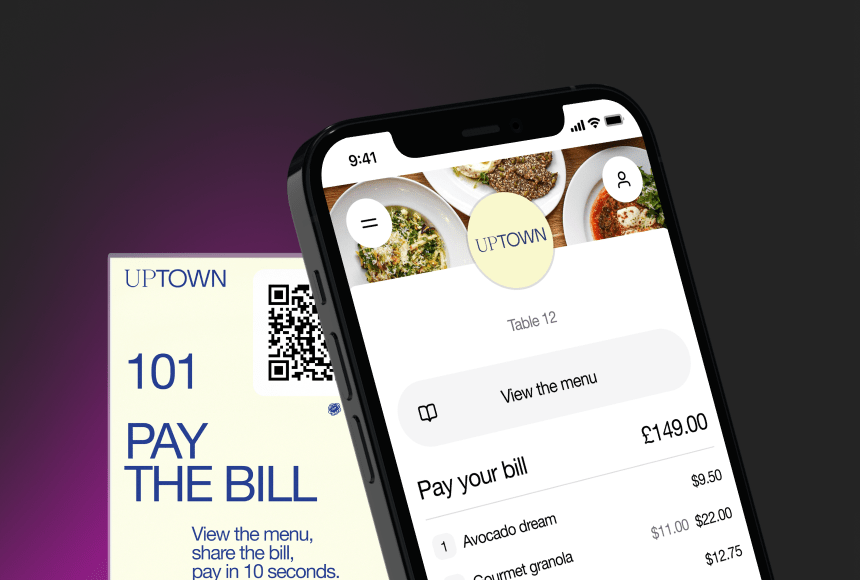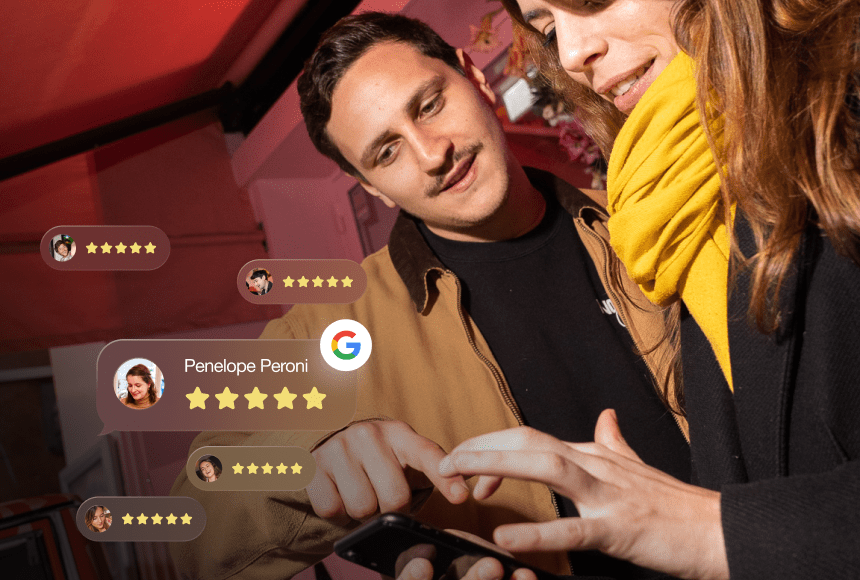
Revolutionising the Dining Experience with QR Codes
Modernising How Diners Pay
If you’ve looked around any bustling high street lately, you’ve likely noticed just how many people rely on smartphones for nearly everything—from booking taxis to grocery shopping. In restaurants, this shift to digital is accelerating, especially with a growing trend toward QR code payments. A quick scan, a couple of taps, and the bill is settled. According to UK Finance, contactless transactions in the UK are skyrocketing, illustrating the public’s hunger for simpler, faster ways to settle up.
For restaurateurs, this is more than a novelty. Embracing QR code payments can reshape your customer journey, offering a frictionless environment that benefits diners and staff alike. But why exactly should you integrate QR payments into your day-to-day operations? Below, we’ll unpack the tangible advantages, from speeding up table turnover to motivating higher tips. Whether you run a cosy bistro or a fast-paced eatery, these insights will help you see why QR code payments might just be the missing ingredient in your restaurant’s recipe for success.
1. Speed and Convenience for Guests
Gone are the days when diners had to flag down a busy server or queue at a card machine to pay. With QR codes, they can grab their phone, scan a code on the table, and instantly view their bill. A few taps later, everything is settled. This simple process offers multiple perks:
- Less Waiting: Rather than waving for attention, customers finalise payment on their own terms. Especially handy if they’re in a rush or craving a speedy exit.
- Higher Turnover: When the bill doesn’t become a bottleneck, tables free up quicker. Great for busy weekends or peak lunch hours when every seat counts.
- Familiar Technology: Most people already scan QR codes daily—be it on a train ticket or a store promotion. Adding one more step to their routine is near effortless.
In a hyper-competitive market, saving your customers’ time can be a game-changer. People remember a place that respects their schedule, often returning with friends in tow.
2. Contactless Payments That Instil Trust
The pandemic accelerated the UK’s pivot toward contactless everything. Even now, diners prefer minimal physical contact—especially with payment terminals used by dozens of others. QR payments fit this bill perfectly.
- Phone-Centric Transactions: Guests handle everything on their phone, eliminating any lingering concerns about hygiene.
- Seamless Digital Wallets: Many solutions integrate smoothly with Apple Pay or Google Pay, making payments near-instant.
- Reduced Hardware Costs: Because customers rely on their devices, you don’t need as many card machines or fancy contactless readers.
Trust is crucial in hospitality. When people see you prioritising safe, contact-free options, they’re likely to view your entire establishment as forward-thinking and considerate.
3. Encouraging Healthier Tipping
Diners can easily forget or skip tips if the process feels clumsy—like searching for coins or adding an awkward optional line on a card receipt. With QR payments, the system prompts them gently at checkout, often leading to higher gratuities:
- Suggested Tip Amounts: Handy pop-ups—10%, 12.5%, or 15%—spur more generous contributions than if it was left open-ended.
- One-Tap Convenience: Without physically signing anything or fishing out small notes, guests are more likely to reward good service.
- Motivated Staff: As tipping becomes steadier, servers see direct payoffs for extra efforts. That positive morale often translates to even better customer care.
The difference can be significant. A restaurant that automates tipping usually observes an uptick in staff satisfaction, ultimately boosting retention and quality of service.
4. Freeing Up Servers for Genuine Hospitality
Collecting and processing payments can consume a surprising chunk of your team’s time. If servers are constantly juggling card machines, they have fewer moments to engage diners, recommend specials, or notice if anyone needs a refill. QR codes let staff skip the back-and-forth:
- Minimal Bill-Handling: The app or platform does the heavy lifting. Your server only needs to drop by for quick queries, letting them focus on upselling or small talk that makes dining memorable.
- Reduced Machine Bottlenecks: If you’ve only got one or two card terminals, they can become pinch points. QR payments scale effortlessly as each table handles its own transaction.
- Enhanced Table Turn Management: Once diners pay, servers receive automatic alerts, indicating which tables are ready to be reset. It’s smoother than scanning the room for waiting hands.
By removing mundane payment duties, you let staff shine where they excel: creating a warm, welcoming atmosphere. That personal touch often turns casual customers into loyal regulars.
5. Integrating In-House and Online Channels
In 2023, many restaurants juggle dine-in, takeaway, and sometimes even direct deliveries. QR payments can unify these channels in surprising ways, especially if you link everything to a central POS:
- One-Stop Menu Access: Diners scanning a QR code can also see your full menu, whether they’re seated or waiting for a takeaway. No confusion about what’s on offer.
- Stock Management: If you’re low on an ingredient, the digital menu instantly updates. Customers can’t order something you can’t serve—reducing order cancellations.
- Multi-Use Loyalty: If someone pays via QR in-store, their loyalty points might reflect when they order online next time. Consistency across channels fosters trust and convenience.
This synergy matters more than ever as Brits blend on-the-go lifestyles with the desire for quality dining—wherever they happen to be.
6. Boosting Your Brand’s Digital Footprint
Offering QR-based transactions doesn’t just modernise your payment method; it also ties into your overall brand image. Customers see a restaurant that invests in efficient, user-centric solutions. Over time, that can pay off in multiple ways:
- Social Media Buzz: Tech-forward experiences often provoke chatter online. Diners might share snaps of your easy checkout flow on Instagram or TikTok, tagging you for all to see.
- Positive Reviews: Some QR payment solutions—like sunday—can prompt Google reviews immediately after paying. Happy guests may leave glowing feedback right on the spot.
- Word-of-Mouth Recommendations: People remember a swift, pleasing exit. They mention you when colleagues ask for a quick lunch spot or a seamless dinner venue.
A strong digital presence is no longer optional. Even the most unassuming local café can thrive if the dining experience impresses people enough to rave about online. QR code payments provide that small but critical tech-savvy edge that resonates with today’s diners.
7. Gathering Insights from Customer Behaviour
Traditional card machines reveal little beyond the transaction total. QR solutions, however, can collect broader data points—like which items were popular or how many people added tips. Aggregated, this info guides smarter decisions:
- Identifying Bestsellers: Spot trends in dish popularity, so you can tweak your menu to highlight crowd favourites.
- Real-Time Metrics: Watch how busy certain times are and schedule staff or run promotions accordingly. A well-timed special can fill otherwise quiet slots.
- Customer Segmentation: Notice patterns in your diner base—such as families who frequent weekend brunch or frequent travellers who prefer contactless. Tailor marketing campaigns to each group.
By connecting payments to data, you remove guesswork from your day-to-day operations. That clarity can refine everything from your stock ordering to your promotional strategies.
8. Reducing Operational Costs
While rolling out a new payment method might sound like an investment, it often cuts overhead in the long run. Here’s how:
- Less Hardware: If every table has a QR code, you can manage with fewer card terminals—saving on rental or maintenance fees.
- Streamlined Staff Scheduling: Because payment is simpler, you might reduce the number of staff needed at peak hours or let them focus on more profitable tasks (like upselling or bartending).
- Lower Printing Costs: Guests can view menus and receipts digitally, trimming printing expenses and helping the environment too.
These small savings add up, especially in an industry where margins can be razor-thin. It’s not just about convenience, but a smarter financial stance for your business.
9. Enhancing Staff-Guest Interactions
Servers can end up playing a cat-and-mouse game: take orders, run to the kitchen, bring the card machine, fetch receipts, scramble for change. QR payments break that cycle. Freed from the mechanical parts of billing, staff can focus on real hospitality:
- Personalised Recommendations: If a diner wants a wine pairing, your server can spend time discussing options rather than toiling over a till.
- Prompt Problem-Solving: Spotted an unhappy expression? Staff have the bandwidth to fix it, instead of being stuck processing another table’s bill.
- Smiling Exits: As customers handle the transaction themselves, staff can focus on farewells, hoping to see them again soon.
When each diner feels personally attended to, your restaurant’s reputation soars. That genuine warmth often means they’ll linger for desserts, then come back next week for more.
10. Joining Forces with sunday
If you’re looking to roll out QR code payments, consider solutions like sunday, which integrate seamlessly with many existing POS systems. Once diners scan the code, they can pay, tip, and even leave a Google review in one frictionless sequence. The benefits are clear:
- Instant Table Turn Updates: The moment a diner finalises payment, staff know. No manual checks or confusion over who’s settled up.
- Guaranteed Upsells: Built-in prompts can suggest menu add-ons or highlight daily specials before diners finalise their bill, boosting average spend.
- Real-Time Feedback: Guests who’ve had an exceptional meal can share it publicly right away. If something went amiss, you can address it before they walk out the door.
The synergy between a QR payment app and your restaurant’s operations can be transformative. Servers stay calm, guests remain in control, and management sees clearer data on sales and tipping patterns.
Envisioning a Future-Ready Restaurant
Adopting QR code payments reflects a broader shift in how UK diners engage with restaurants. Today’s patrons gravitate toward immediate answers and digital conveniences. If you can meet those expectations, you’ll stand out—and possibly even reframe what a dining experience can look like. Effortless checkouts, integrated tipping, reduced staff burden, and a stronger brand presence. What’s not to like?
While the concept may sound daunting, especially if your team has never used QR codes for payments, implementation is often smoother than expected. A single training session, a dash of clear signage, and your guests will catch on quickly. In fact, most people already know how to scan QR codes from online shopping, app downloads, or even adverts on buses.
So, when you weigh up the advantages—ranging from cost savings and swift checkouts to data insights and loyal customers—QR code payments emerge as a compelling upgrade. And if you’re eyeing a solution that clicks seamlessly into your existing setup, sunday might be the perfect fit. Let them scan, tip, review, and exit with a smile, while you gather the data you need to polish your service even further. In a market where diners demand streamlined experiences, it’s an investment that can pay dividends for years to come.
Find out more today
Drop us your details below and we’ll reach out within the next 24
“Bill please” is a thing of the past.
With our integrated QR codes your customers pay in seconds, straight from their table.



